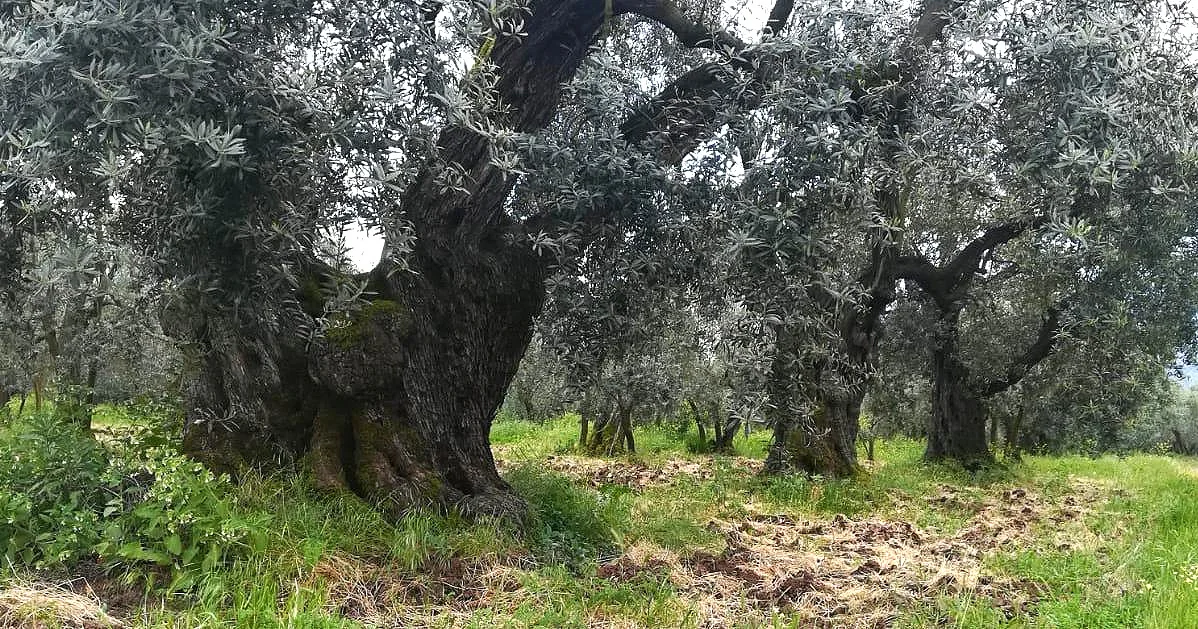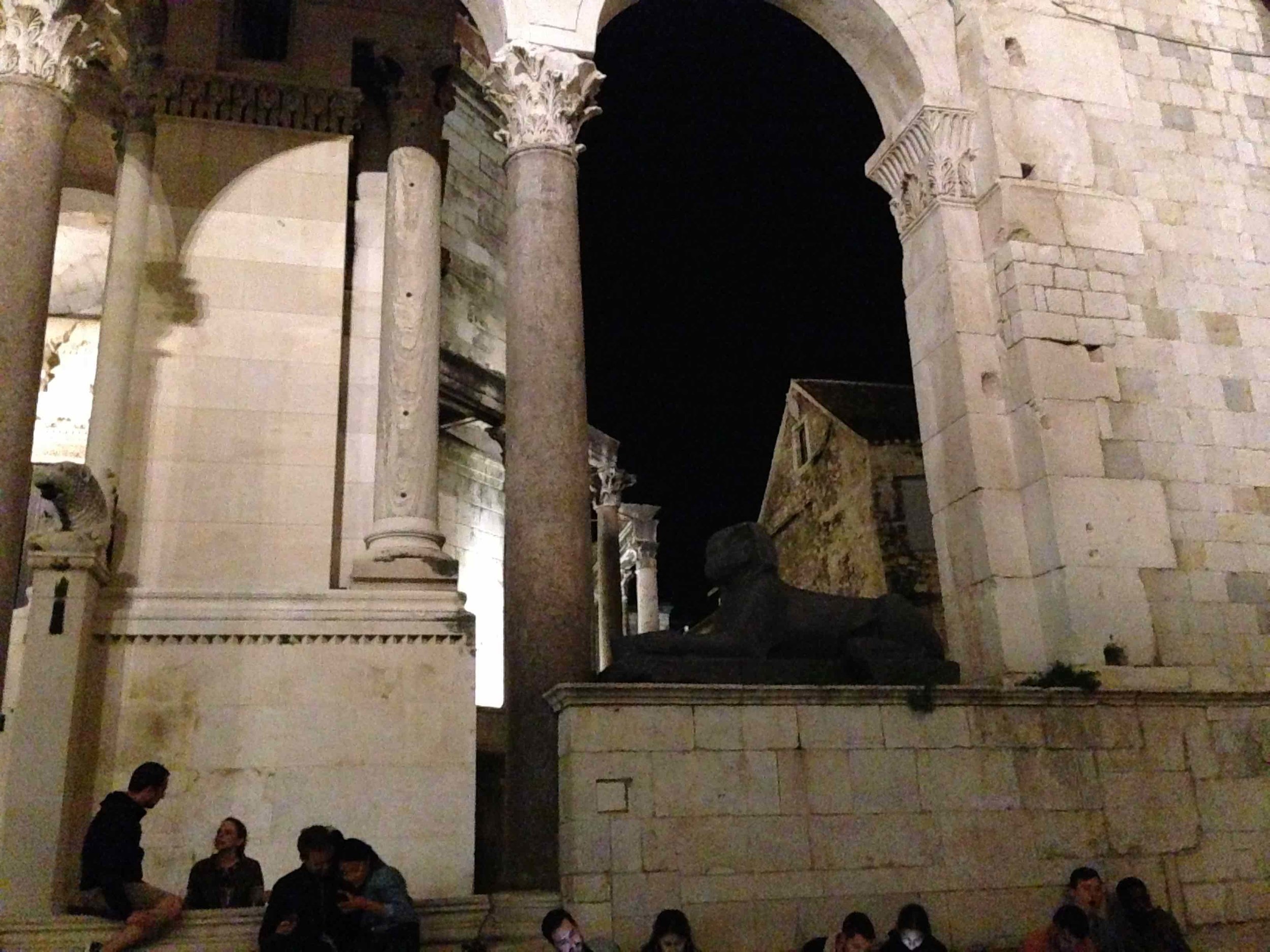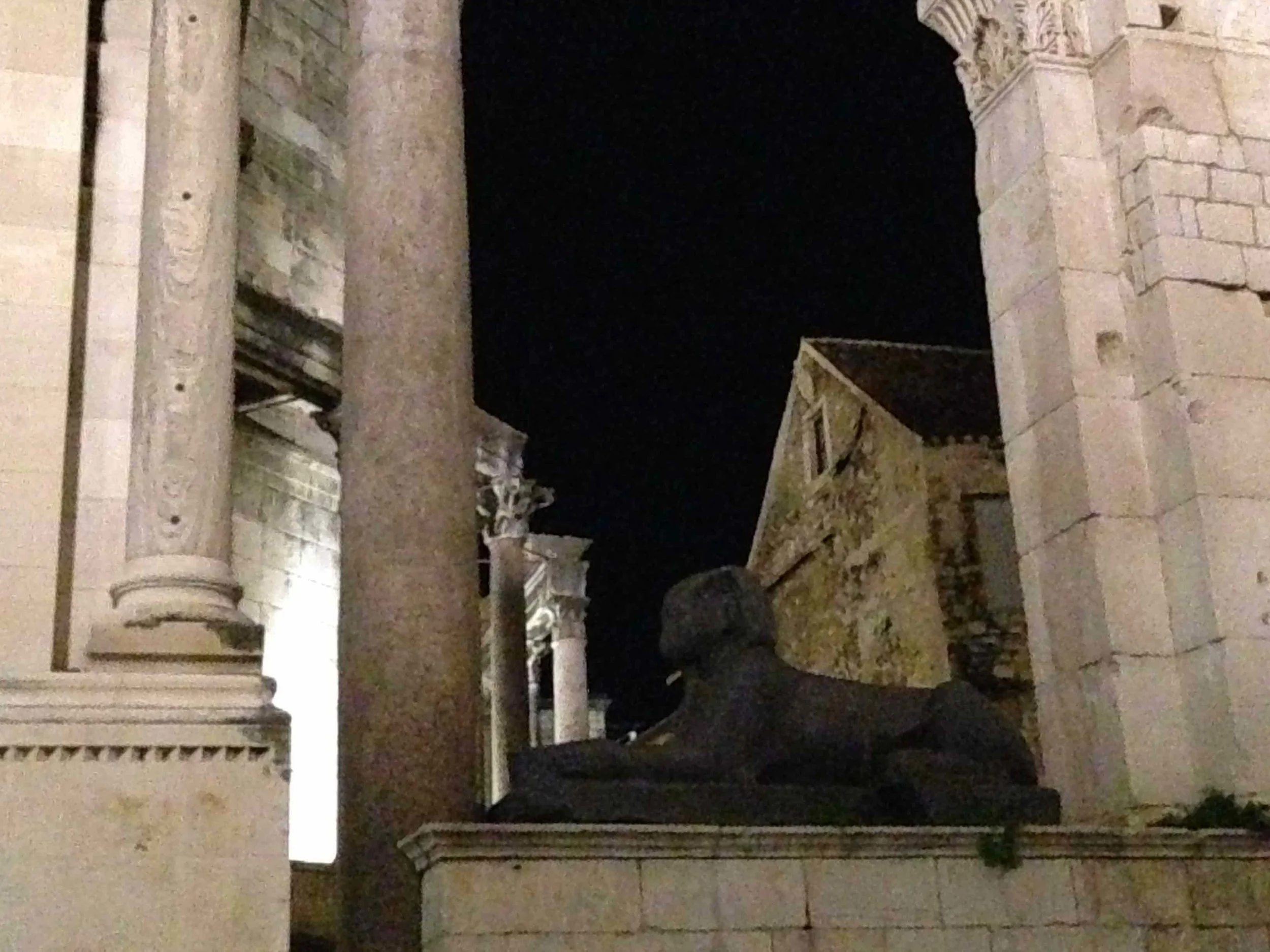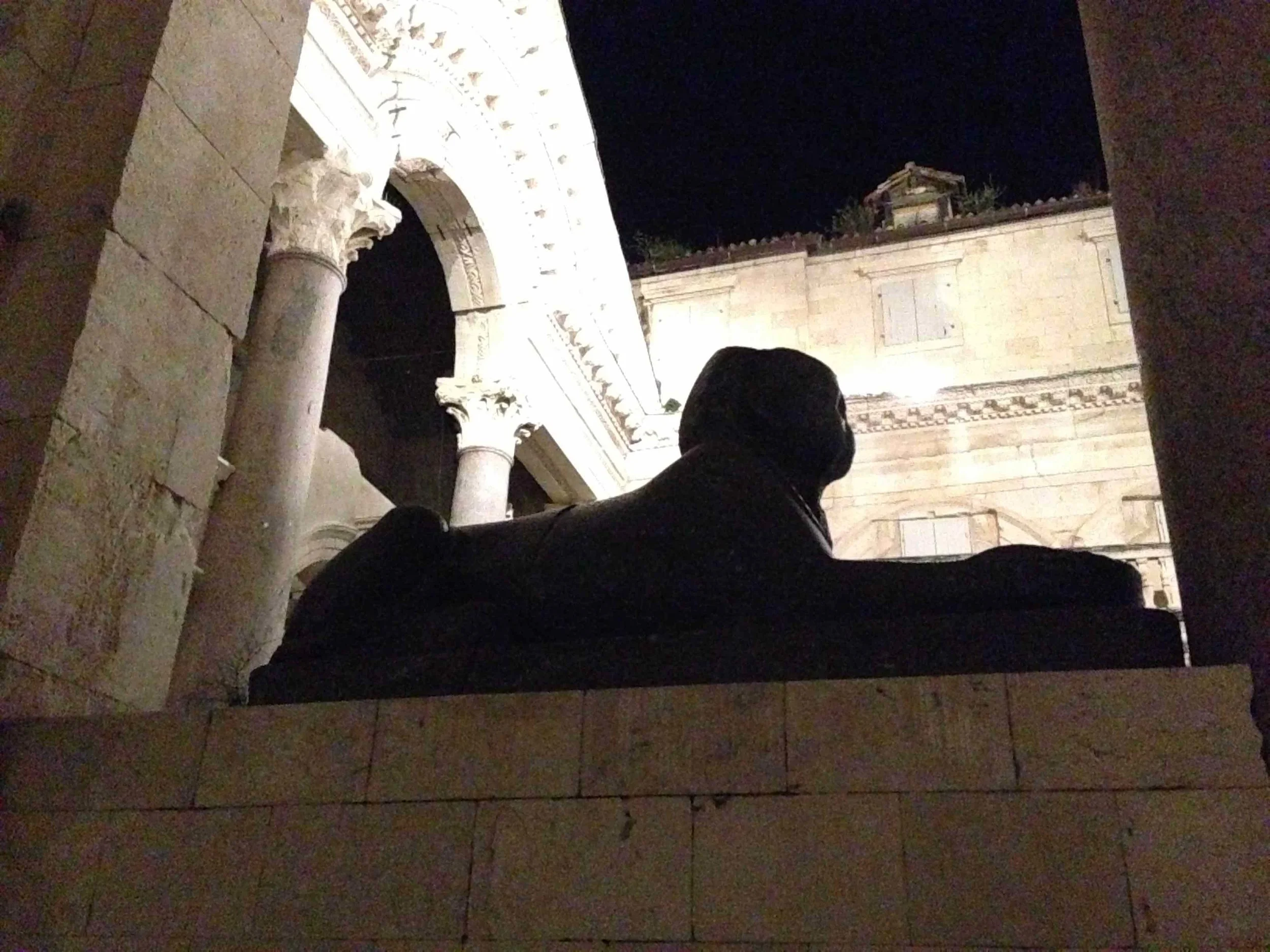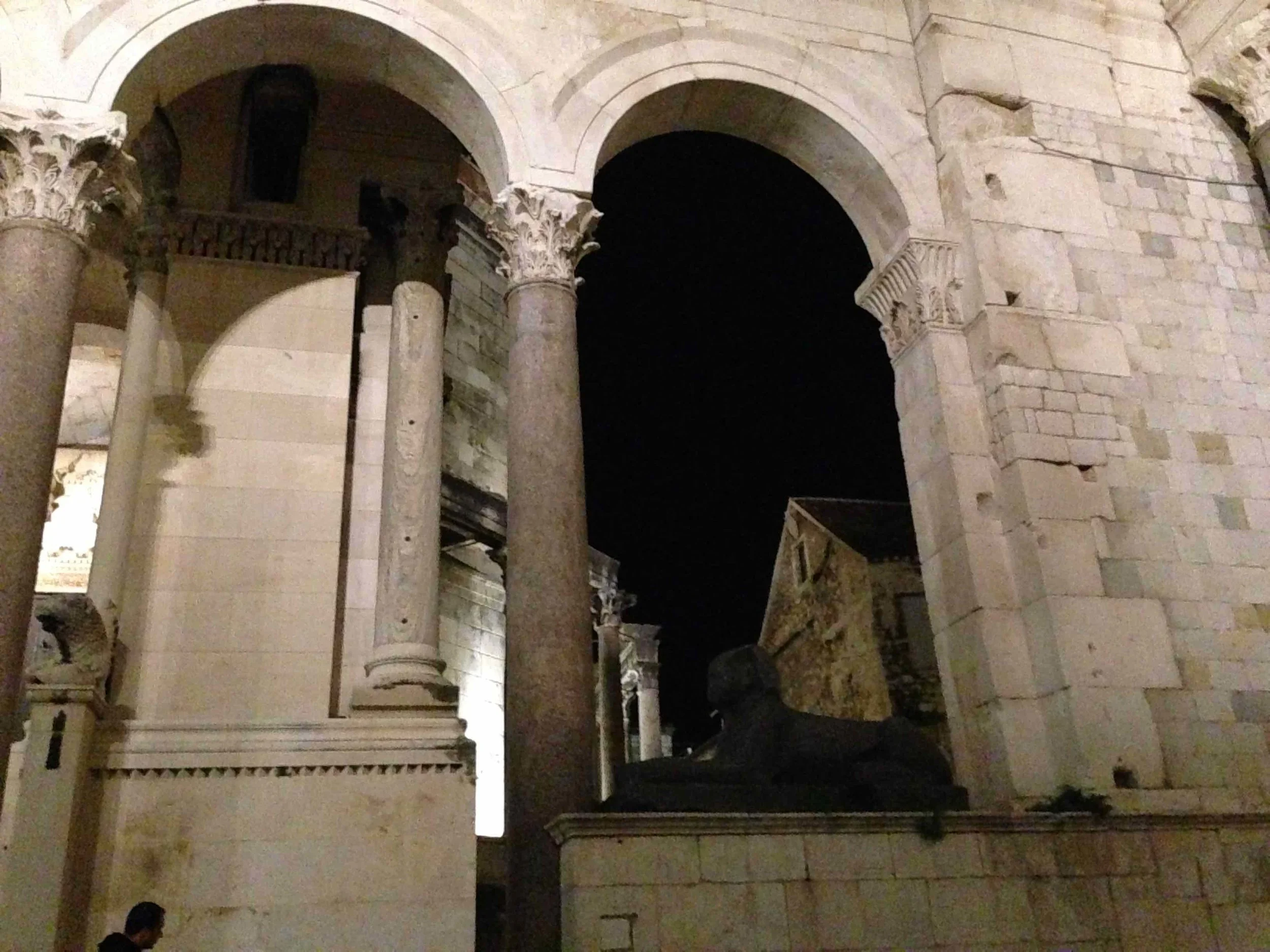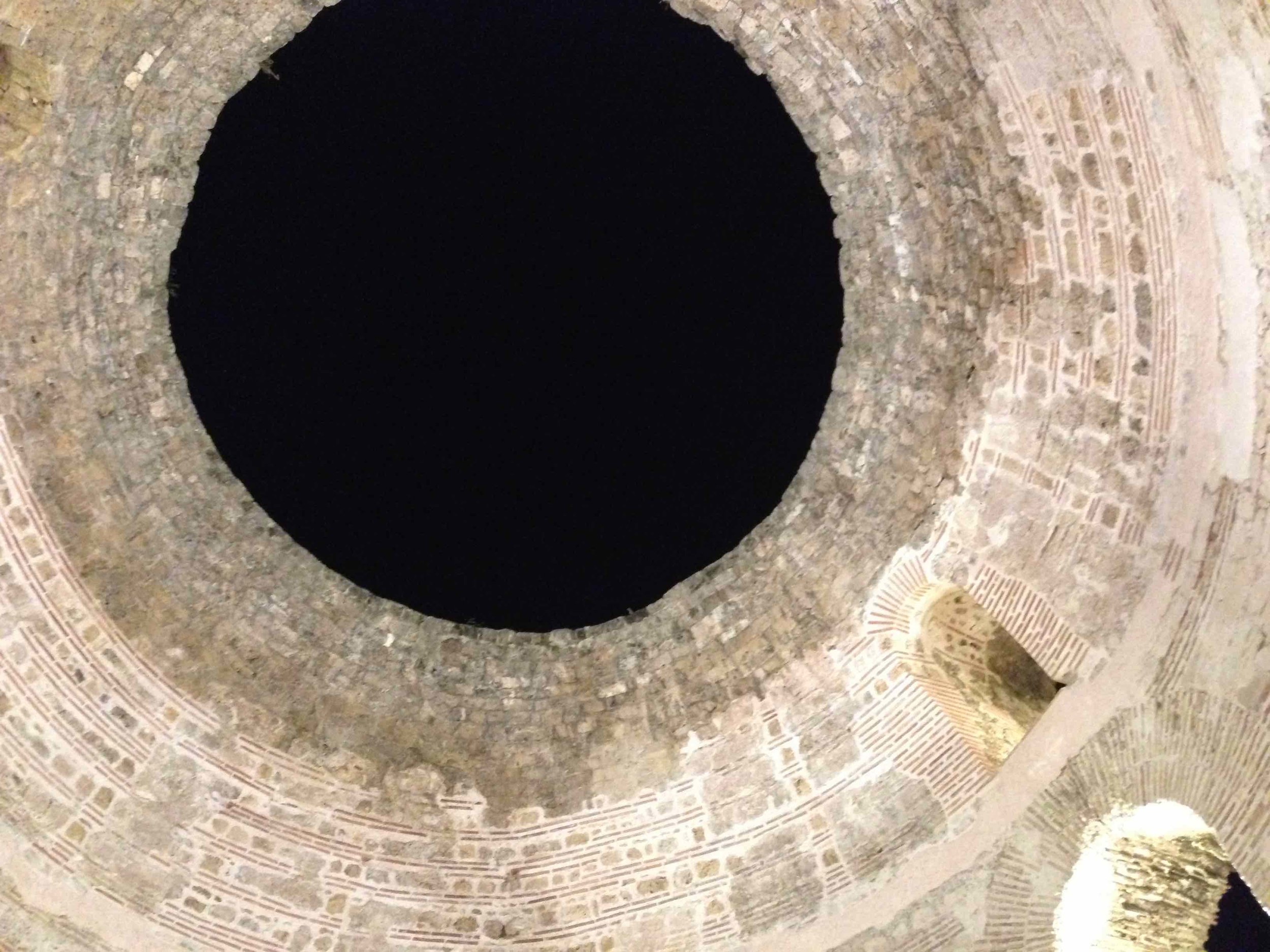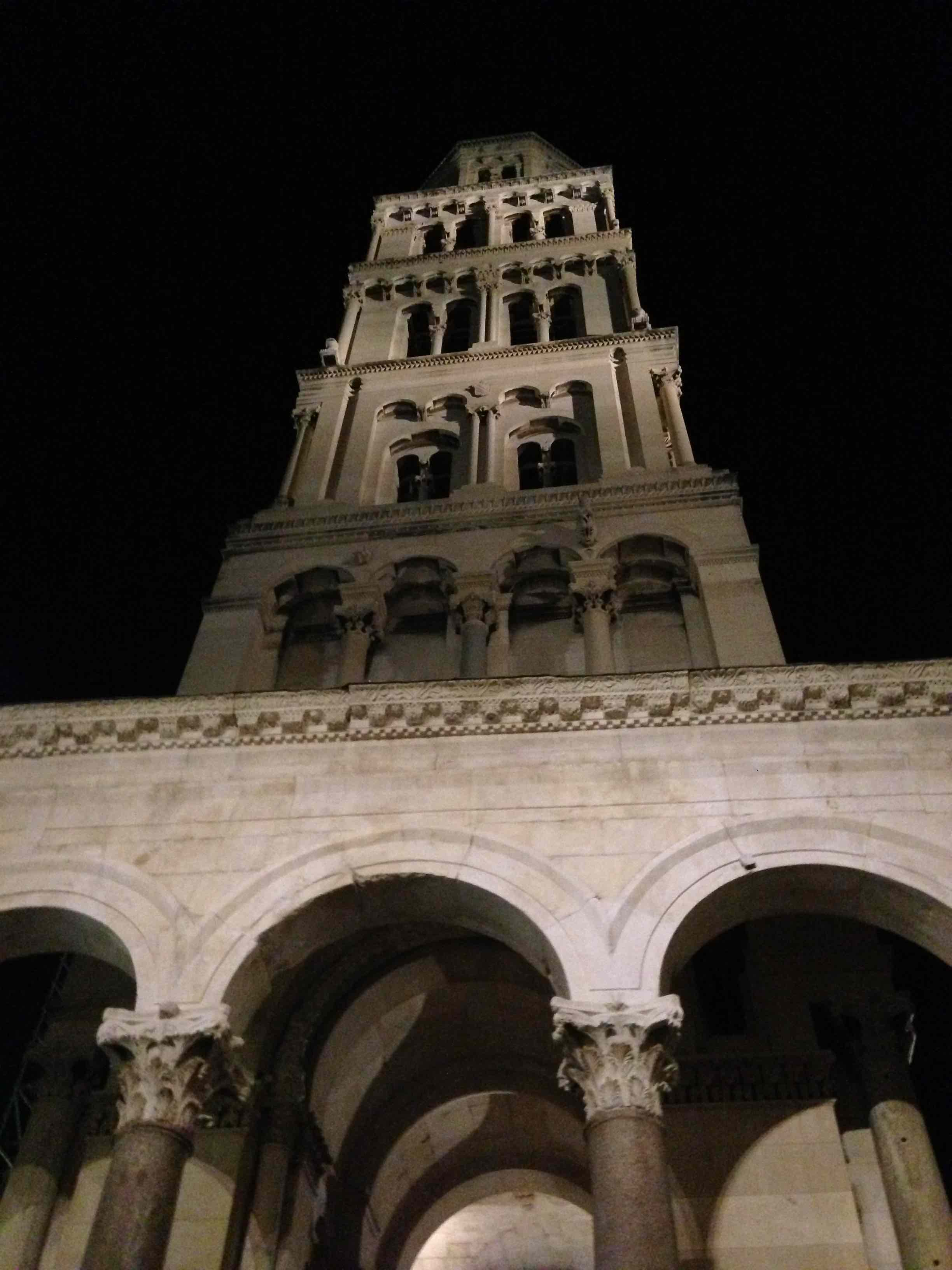E.U. Interreg MED Programme | ARISTOIL Project Meeting | Split, Croatia
27-30 May, 2019 | 5th Partnership Meeting | Steering Committee (CY)
Hosting Partner: University of Split
Venue: Split University Campus, Faculty of Chemistry & Technology
The Interreg Mediterranean Programme supports projects in the region that develop innovative concepts, practices, and the sustainable growth and use of resources. The specific goal of the ARISTOIL Project is the “reinforcement of Mediterranean olive oil sector competitiveness through development and application of innovative production and quality control methodologies related to olive oil health protecting properties”, and includes partners from Greece, Italy, Cyprus, Croatia, Spain.
Following visits to Greece, Cyprus, Italy and Spain, the Aristoil Project Steering Committee’s first partner conference in 2019 was held in Croatia, and was hosted by Croatian project representative, the University of Split.
Steering Committee members for Cyprus for the ARISTOIL Programme are Athan Gadanidis, Dir. of ARISTOLEO, and Melina Nicolaides, Dir. of ACTIVATE.
SOME BACKGROUND E.U. INFORMATION:
Interreg is one of the key instruments of the European Union supporting cooperation across borders through project funding. Its aim is to jointly tackle common challenges and find shared solutions in fields such as health, environment, research, education, transport, sustainable energy and more.
Interreg is one of the two goals of the EU Cohesion Policy in the 2014-2020 period and it is funded by the European Regional Development Fund (ERDF).
The ERDF is a fund allocated by the EU aiming to help redress the main regional imbalances in the Union. It aims to allow less advantageous regions to start attracting private sector investments, and create jobs on their own. It also aims to strengthen economic and social cohesion in the EU by correcting imbalances between its regions and focuses its investments on several key priority areas, known as ‘thematic concentration’; one example of a theme is ‘Innovation and Research’.
Interreg has a budget of EUR 10.1 billion invested in the several cooperation programmes responsible for managing project funding, and has three types of programmes: Cross border (60); Transnational (15); Interregional (4).
Interreg Europe helps regional and local governments across Europe to develop and deliver better policy. By creating an environment and opportunities for sharing solutions, it aims to ensure that government investment, innovation and implementation efforts all lead to integrated and sustainable impact for people and place.
The Interreg MED Programme gathers 13 European countries from the Northern shore of the Mediterranean that work together for sustainable growth in the region. The main objective of the Programme is to promote sustainable growth in the Mediterranean area by supporting projects that develop innovative concepts and practices, promote a reasonable use of resources, and support social integration through an integrated and territorially-based cooperation approach.
The ARISTOIL Project: Why & How
Olive grove in Dalmatia
The olive tree, native to the Mediterranean basin has been utilized by people of the region as far back as the 8th millennium BC and archeological evidence has shown that by 6000 BC olives were being pressed into olive oil. Today, 95% of the world's olive oil is produced in the Mediterranean; mainly in Greece, where the Peloponnese which produces 65% of Greek olive oil; the regions of Sicily, Calabria and Puglia in Italy; and the Andalusia province in Spain, which is also the biggest olive growing area on the planet. The composition of olive oil varies depending of many factors, including the cultivar type, altitude, time of harvest and extraction process.
The main common challenge for all participating countries in the ARISTOIL project is that the average price of olive oil is low in comparison to the production cost and moreover, there is strong competition with the non-Mediterranean seed oil sector. The producers of the Mediterranean are compelled to either reduce the cost of production or to increase the value or the demand for olive oil in the international market in order to maintain the viability and sustainability of olive tree cultivation and olive oil production.
The main objective of the Interreg Med ARISTOIL Programme is the reinforcement of Mediterranean olive oil sector competitiveness through development and application of innovative production and quality control methodologies leading to olive oil with enhanced health protecting properties (as recognized by EU 432/2012 regulation). The development of a Mediterranean Cluster for olive oil producers and businesses, combined with specialized training, development of innovative methods for identifying the phenolic ingredients of the oil, as well as providing oil producers with support by special product certification, is the strategy which will lead to the project’s objective.
High Phenolic olive oil is olive oil with a high concentration of oleocanthal and oleacein.
The expected results of the project are:
Reinforcement of production of innovative olive oil product
A comparison of available analysis methods for olive oil ingredients and optimization of the most suitable methods will be completed throughout the project. The optimization of methods will accompanied by the development of a tool which can be used by the producers for fast oil analysis in the field in order to know if it is the right moment to collect the oil and achieve the optimum taste and phenolic ingredients. All relevant information will be simplified and provided to the producers through a user-friendly Guide for production of olive oil.
Training for over 3000 olive oil producers and millers
A total of 3230 olive oil producers and millers will be trained through the organization of 72 training courses and seminars for olive oil producers and olive millers throughout the project implementation. Training and seminars will be dedicated to inform producers and olive millers on innovative production methods and tools which are at their disposal.
Consumer awareness-raising
Consumers should be informed on the health benefits of olive oil high in phenolic content according to EU 432/2012 regulation. A series of info days (44) organized in the participating countries are dedicated to enhance the knowledge capacity of stakeholders and consumers.
Development of a standardized procedure for Olive oil “Health Claim” certification
The increase of the Mediterranean olive oil sector competitiveness lies upon the construction of a “high quality” brand for olive oil produced in this region meeting minimum specific standards. The development of standardized procedures for certification and the creation of two certification centers in Spain and Greece covering the needs of all the Med area will ensure the final consumer on the product quality.
Development of Mediterranean Olive Oil cluster of key actors
A Mediterranean Cluster of olive oil sector key actors will be developed aiming to facilitate networking and cooperation across the Mediterranean region. An e-hub will support the communication and exchange of experience among the key actors. Information on new market opportunities, exhibitions, seminars, demand and other ideas will flow through this hub.
Moreover, the ARISTOIL project will suggest solutions to existing problems, trying to combine the expertise of the scientific partners. Main problems identified are:
1. No officially recognized method for measurement of the olive oil phenolic ingredients that are responsible for the health-protecting properties and for this reason there is no commonly accepted way for monitoring the quality regarding the health claim.
2. Producers’ lack of knowledge on olive oil production that fulfill the health claim criteria because there is also lack of robust data concerning the agronomic and processing factors that influence the levels of the phenolic ingredients in olive oil.
Consequently, what the partners are called to do is to optimize and cross validate the best available methods of chemical analysis (NMR, LCMS, colorimetry) offering new commonly accepted tools for olive oil quality monitoring. The analysis methods will be adopted by two certification centers in Greece and Spain. The analytical methods will be applied to the analysis of 3,000-5,000 samples of olive oil in order to investigate the most critical factors, for ex. variety, harvest time, processing parameters.
Moreover, a Guideline document will be prepared for producers to be followed for preparation of extra virgin olive oil with high phenolic content; these compounds are recognized by the European Food Safety Agency (EFSA) and embodied in the 432/2012 European Regulation, which includes the health claims associated with the consumption of food components. The parameters that embody the production of extra virgin olive oil with high phenolic content are associated to genetic (olive tree cultivar), agronomic practices (such as water availability, time of harvest) and technical factors (olive oil extraction and milling process) etc.
The long-term objective is to provide Mediterranean olive oil producers the potential to increase the value of their product, to increase the knowledge capacity of olive oil producers, and ultimately, increasing the demand for high quality olive oil.
The town of Split, Dalmatia, CROATIA
Dalmatia is one of the four historical regions of Croatia, alongside Croatia proper, Slavonia, and Istria. The region of Dalmatia is a narrow belt of the east shore of the Adriatic Sea, and it is mostly covered by the rugged Dinaric Mountains. There are 79 islands (and about 500 islets) that run parallel to the coast, the largest (in Dalmatia) being Brač, Pag, and Hvar.
The second main olive-producing region in Croatia after Istria, is Dalmatia. It is thought that olives came to Dalmatia from Ancient Greece after the Ancient Greeks sailed into what is today the town of Stari Grad on the northern side of the island of Hvar in in 384 BC; the Greeks brought with them vines and olive trees originally from the island of Paros to plant them in the fertile agricultural land that is today considered a UNESCO World Heritage Site.
The coastal town of Split lies on the eastern shore of the Adriatic Sea and is situated on a peninsula between the eastern part of the Gulf of Kaštela and the Split Channel. Split is the is the second-largest city of Croatia and the largest city of the region of Dalmatia, followed by Zadar, Dubrovnik, and Šibenik. The population living in the urban area of Split is roughly 300,000. The entire Split-Dalmatia County has 454,798 residents, and the whole region of Dalmatia just under a million people.
The history of Split is traditionally associated with the construction of the Palace of Diocletian built for the Roman emperor in AD 305, however, the city was founded several centuries earlier as the Greek colony of Aspálathos, or Spálathos, it is estimated to have been in the 3rd or 2nd century BC. It became a prominent settlement around the year 650 when it succeeded the ancient capital Salona, of the Roman province of Dalmatia.
Diocletian’s Palace, built as the retirement residence of the Emperor following the abdication of his rule, makes up of roughly half of the historic center of Split. Although referred to as a ‘palace’, the structure resembles a large fortress as about half of the complex housed a military garrison. While there, Diocletian treated his rheumatism with water from a natural sulfur spring within his personal thermae located in the southwestern part of the Palace.
The Palace was built as a rectangular building (approximately 215 x 180m), divided into four parts with two main streets and with four large towers at the corners, doors on each of the four sides and four small towers on the walls. The whole complex occupied around 30,000 square meters. What is now the historic center of Split was built around the Diocletian Palace and was added to the UNESCO list of World Heritage Sites in 1979. Today the palace is surrounded with shops, cafes, restaurants and also apartments, located in the old buildings and on narrow streets around it, with nearly 3000 people living in this area.
As the world’s most complete remains of a Roman palace, it is not only one of the most famous and complete architectural and cultural features on the Croatian Adriatic coast, but represents a unique example of Mediterranean, European, and world heritage.
The Palace was built with white local limestone and marble from the marble quarries on the island of Brač and the columns are Egyptian granite. Originally, the Palace was decorated with 3500-year-old granite sphinxes from Egypt, purportedly from the site of Pharaoh Thutmose III. Only three remain; this one is in the Peristyle, or monumental court, seen above. Behind the Peristyle lies the Vestibule, a Rotonda, a circular hall, once topped with a dome, 17 meters in height and 12 meters in diameter, built as a grand meeting hall for selected audiences.
The Olive Tree in Croatia
Along with grape vines and figs, olive growing began in Croatia in the 4th century BC. The olive was always the most numerous and most important fruit of Dalmatia, and during the history it provided man with everything he needed: wood for timber and firewood, leafs for animal feed, fruit for human consumption; its oil provided food, medicine and oil for burning in lamps to provide light. Even in the statute of the city of Split in Dalmatia from 1312 it stipulated that at least 6 olives must be planted on each planted vineyard. Olive cultivation in Croatia is a cultural practice and heritage that has existed throughout the Mediterranean since antiquity.
Due to Croatia’s geographical position, soil composition and micro-climate which is very favourable for growing olives, both the regions of Dalmatia and Istria produce olive oil, but of a different type. Istrian production is done in a more organized manner with rows and rows of olive trees perfectly lined up 2m away from one another; while in Dalmatia, olives grow in a more natural setting, and its slopes and hills make irrigation difficult. Istria has roughly twenty olive oil mills that produce around 200–450 tons of olive oil per year, which makes around 10% of Croatian production. Olive oil has been prized for millennia in Croatia and extra virgin olive oil from Istria, is a known for its bitterness and higher level of antioxidants and unsaturated fatty acids.
Today it is estimated that Dalmatia has about 4-5 million olive trees, and most of the oil is produced within family farms. The number of farms and the scattered nature of olive groves created a need for merger into producer associations, which in 2004 merged further to establish a body called the “Union of the Association of Olive Growers and Olive Oil Producers of the Republic of Croatia” whose aim it is to increase the production and quality control as well as to educate both olive oil producers and consumers.
The climate of Dalmatia is one of three Mediterranean types, the Csa (hot dry-summer), which the World Meteorological Organization designates as an olive-growing climate. The indigenous varieties provide an olive oil with moderate bitterness and pungency. The most important Dalmatian variety is “Oblica” due to its quality and for its share in the total number of olive trees. It accounts for about 60% of the total Croatian cultivars. In Dalmatia this is 75-80%, while together with “Lastovka” and “Levantinka” they make up 90% of the total varieties of Dalmatian olive groves.
ARISTOIL 5th Steering Committee Meeting
The ARISTOIL 5th Steering Committee meeting took place between 27 and 30 of May 2019 and was focused mainly on the ARISTOIL cluster and capitalization actions as well as checking with the requirements of the project. Alongside the deliberations of the Steering Committee, the hosts of the conference also arranged Study Visits.
These study visits included trips to see an ancient olive tree in Kaštel, the second largest settlement in the County of Split and Dalmatia; a visit to the olive oil mill in the town of Skradin; and a visit to the olive orchards of agricultural cooperative “Olive and Wine” in Polača (near the town of Zadar).
The “Olive and Wine” cooperative was established in 2006 as a rural development project, and it is the largest organic olive grove and vineyard in Croatia. It produces edible olives in different preparations, and extra virgin olive oil through olive growing; it produces wine through viticulture; as well as figs and products made from figs. Its planted area of olive groves is 41 hectares with 12,000 olive trees, which are cold pressed mechanically. Mr. Sc. Radoslav Bobanović is the Project Manager and Director.
The ecological soil conditions for olive growing at the cooperative were achieved by demolishing and purifying the soil before plantation. Soil processing was reduced by using organic preparations. Irrigation takes place with water collected in its 3 reservoirs, and the coop has its own power supply system. Within the olive groves are grown the Croatian varieties of: Oblica, Istarska bjelica, Buža, Drobnica, Lastovka, Levantinka, Krvavica; and the Italian and Spanish varieties of Leccino, Pendolino, Ascolana Tenera, Frantoia, Carolea, Itrana, Pischolino.
“Mastrinka” the 1500 year old olive tree
In 1990 Mastrinka was declared a natural heritage monument, as a rare tree specimen and as such is protected and cultivated pursuant to the Nature Protection Act.
Olive tree is a symbol of Dalmatia, and olive cultivation and oil production are a big part of rich heritage of this area and since ancient times. The old practices used for olive cultivation in this area – planting, harvesting and refining – have changed very little over the centuries. The old the technique for crushing the olive fruits when the olives were ground manually, by pushing a wooden beam around a stone mill was used until quite recently.
The old olive tree of in Kaštel Štafilić and is a wild (feral) olive tree, is estimated to be about 1500 years old, and is called “Mastrinka” by the locals. As the ancient tree belongs to the species that does not exist elsewhere in Croatia or its wider region, it has been assumed this particular tree was once brought over from southern Italy or Greece. It is believed that this tree could have been planted during Roman times inside an ancient agricultural property, a villa rustica, in the 5th century.
ARISTOIL is coordinated by EUROPEAN GROUP of TERRITORIAL COOPERATION (EGTC) Efxini Poli (Lead Partner) with partners from Greece, Italy, Cyprus, Croatia, Spain and the total budget is Euros 2.008.200,00.
Lead Partner
EGTC Efxini Poli – SolidarCity NETWORK, Greece/Attica
Project Partners
PP1. Euro Mediterranean Center for the Sustainable Development, Italy/Sicilia
PP2. National and Kapodistrian University of Athens, Greece/Attica
PP3. Larnaca-Famagusta District Development Agency, Cyprus
PP4. ARISTOLEO – Cyprus
PP5. University of Split – Croatia/Jadranska
PP6. University of Cordoba – Spain/Andalusia
PP7. Free Municipal Consortium of Ragusa, Italy/Sicilia
PP8. Region of Peloponnese, Greece/Peloponnese
PP9. Kostelenos George Nurseries, Greece/Attica (Associate Partner)
PP10. Diputación de Málaga – Spain/Andalusia
PP11. Puglia Region, Italy/Puglia (Associate Partner)
PP12. Institute for Andriatic Crops and Karst Reclamation, Croatia/Jadranska (Associate Partner)
PP13. Association of Olive Growers Vela Luka, Croatia/Jadranska (Associate Partner)
PP14. Carcabuey Health Ventures, Spain/Andalusia (Associate Partner)
PP15. Panhellenic Union of Olive Mills, Greece/Central Macedonia (Associate Partner)
PP16. American Farm School Post-Secondary Educational and Training Association, Greece/Central Macedonia (Associate Partner)
Banner Image: View of Dalmatian olive grove
